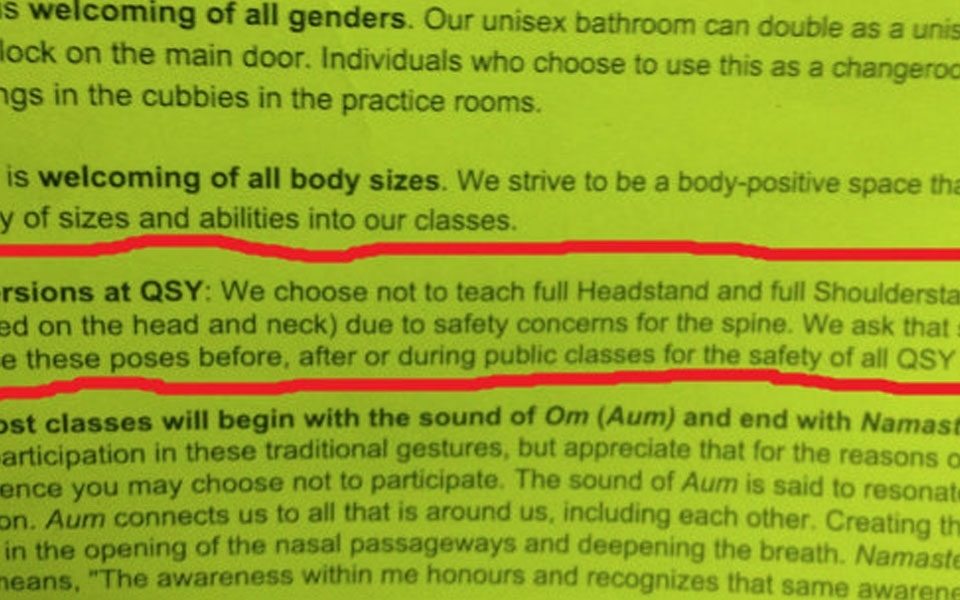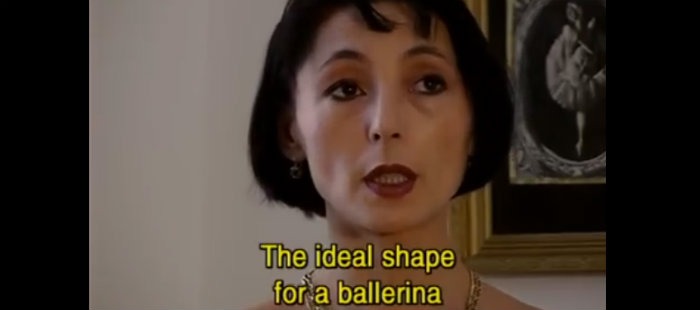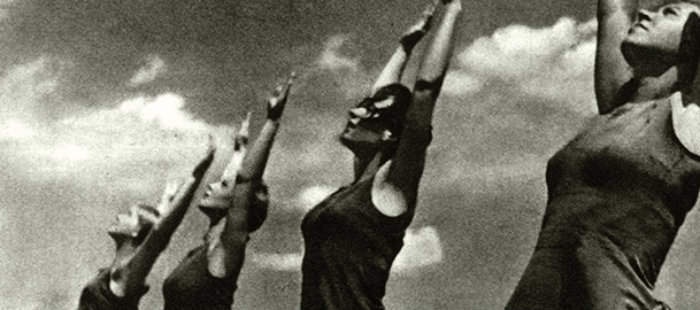Everything is impeccably clean, yet somehow not good enough. Every body part is be placed just-so through an endless series of micro-adjustments, addressing flaws undetectable to the uninitiated. The corrections are so subtle, they must be referring to esoteric aims, visible only to some divine eye. David apparently has the eye, and his Greek-god good looks seem exalted by his magical finger-wand that traces post-production Euclidean forms over his student’s leggings and feet in a fantasy of symmetrical flesh. The graphics are phallocentric: if there are circular forms, they emerge in perfection from a priori vertical lines.



